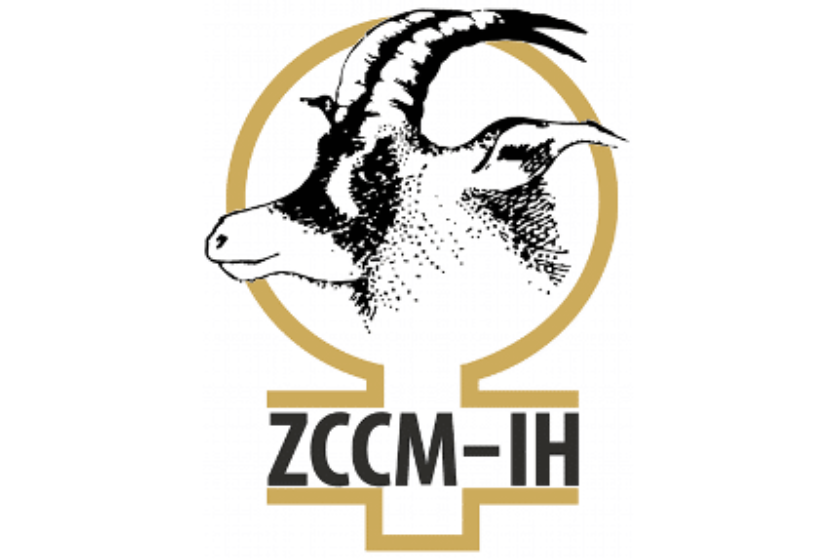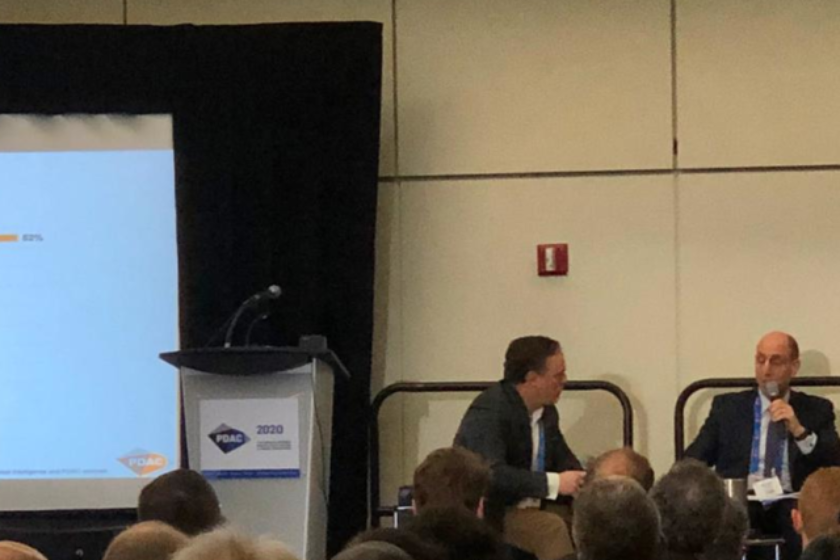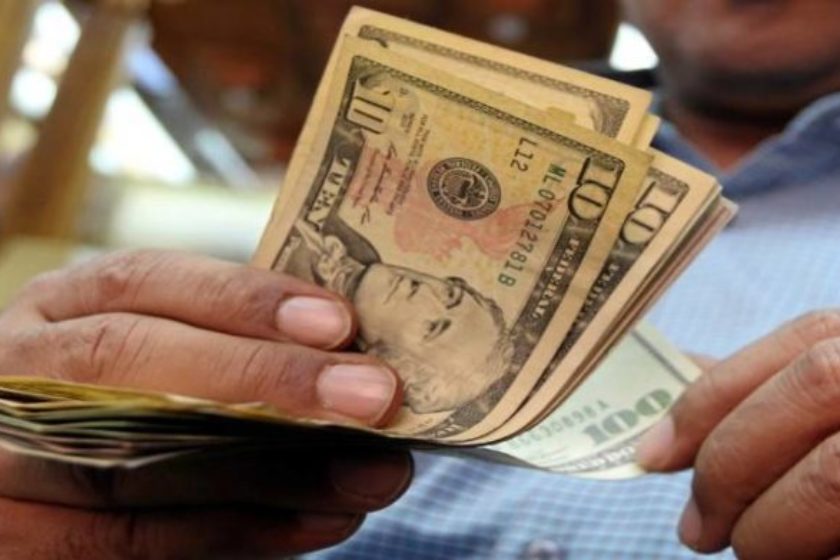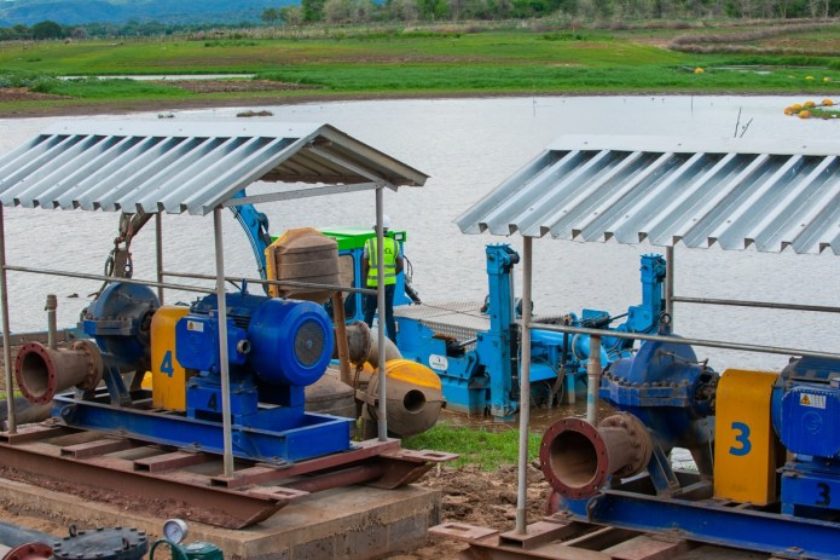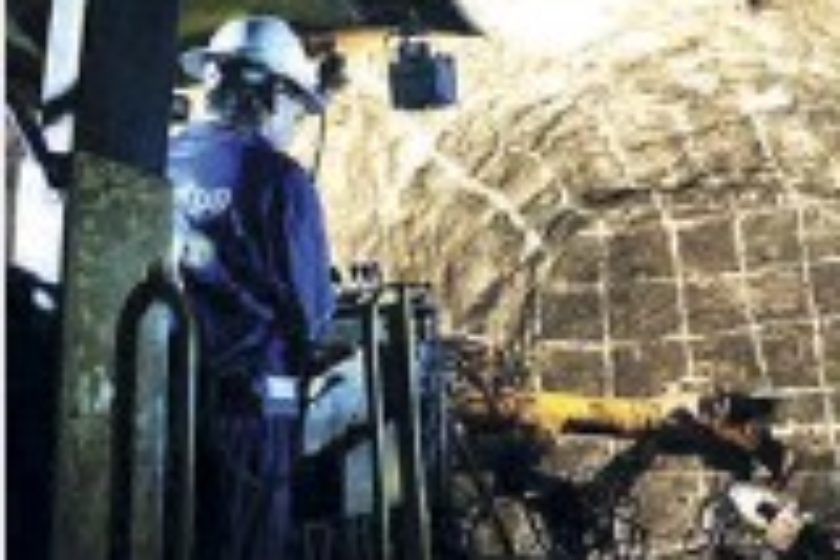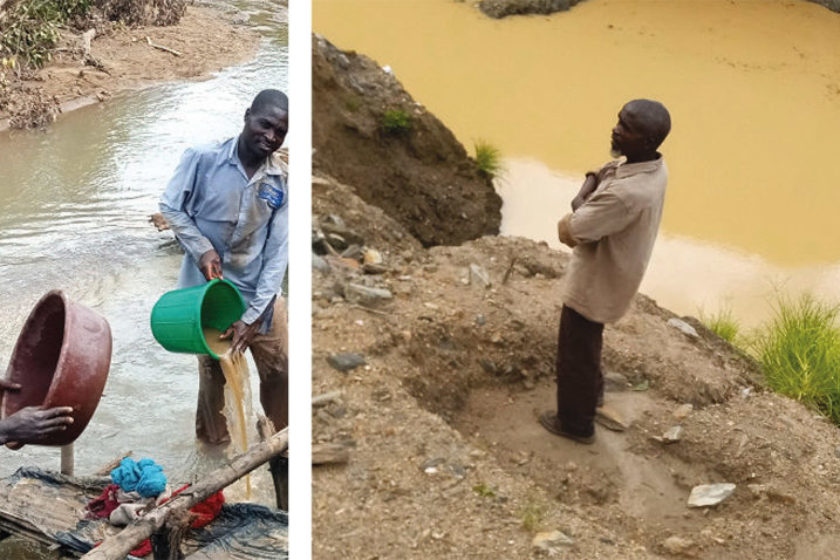As the third most-consumed metal on earth, behind iron and aluminum, copper is all around us. Found naturally in the earth’s crust, copper was among the first metals used by early humans, dating back to the 8th century, BC.
Three thousand years later homo sapiens figured out how to smelt copper from its ore, and to alloy it with tin to create bronze. Bronze was useful for tools and weapons, making it one of the most important inventions in the history of civilization. Copper was later used in roofing, and still is, for its strength and oxidized green look, as well as in works of art. Copper, or Cu, is also essential for all living organisms.
Demand
Just under half of copper demand is for the electronics industry. The rest is used to feed a range of industrial machinery, vehicles and consumer products. For most, no other raw material can be substituted for copper.
According to a report by McKinsey Global Institute, primary copper demand could grow to 31 million tonnes by 2035, a 43% increase over today’s 22 million tonnes (Mt). Total mined production in 2019 was just 20Mt, states the US Geological Survey. McKinsey predicts the majority of future demand will come from China, where per capita copper consumption will likely rise from 7.2 kilograms per person to 11-12 kg by 2035.
Copper is useful for electrical applications because it is an excellent conductor of electricity, and cheaper than gold or silver which are also conductors. That, combined with its corrosion resistance, ductility, malleability, and ability to work in a range of electrical networks, makes it ideal for wiring. Among the electrical devices that use copper are computers, televisions, circuit boards, semiconductors, microwaves and fire prevention sprinkler systems.
In telecommunications, copper is used in wiring for local area networks (LAN), modems and routers. While aluminum is preferred for overhead power transmission lines, copper wires are used in medium-voltage distribution and low-voltage connections.
The construction industry would not exist without copper; it is essential for wiring in residential and commercial construction. The red metal is also used for potable water and heating systems due to its ability to resist the growth of water-borne organisms, as well as its resistance to heat corrosion.
The transportation industry is reliant on copper for core components of airplanes, trains, cars, trucks and boats. A commercial airliner has up to 190 kilometers of copper wiring, while high-speed trains use up to 10 tonnes of copper per kilometer of track.
Automobiles have used copper and brass radiators and oil coolers since the 1970s. Most new vehicles need copper for on-board navigation, anti-lock braking systems, heated seats, defrosting wires embedded in windows, hydraulic lines, and wiring for window and mirror controls.
Copper is destined to play an essential role in the new “green” economy, especially the shift, one we believe is inevitable, from “ICE” vehicles powered by gasoline or diesel fuel, to electric vehicles, hybrids and hydrogen fuel cell autos. This shift is being driven by the need to reduce global air emissions, which scientists universally agree are contributing to global warming.
Copper is utilized in an electric vehicle’s electric motor and wiring. An EV has four times as much copper as a fossil-fueled model. We also can’t forget residential chargers and public charging stations which require a lot of copper – consultancy Wood Mackenzie estimates that by 2030 there will be more than 20 million residential EV charging stations requiring 250% more copper. One of the largest manufacturers of public charging stations is targeting a 50-fold increase by 2025.
The IEA forecasts a more than quadrupling of EV sales in the next decade, from 5.1 million in 2018 to 23 million in 2030. It is estimated the mining industry will need to produce 5 million tonnes of copper a month by 2030, just to meet demand from EVs. That works out to 3.1x the amount of copper that all of the world’s copper mines produced each month of 2019.
A lot of copper is also expected to be required to generate and store electric power. There is a movement away from large, remote, utility-scale power plants, towards thousands of distributed energy sources (DERs) situated closer to end users. These “microgrids” will be “smart”, in that data about generation and usage will stream back and forth between control centers and customers. And more microgrids will be hooked up to renewable energy sources like wind and solar.
According to Copper.org, copper usage will dramatically increase at every level of the new electrical grid and many microgrids.
Economic growth necessitates building more infrastructure to meet increasing demands on power, heat, water, roads and the like. As populations grow, they need more houses, hospitals, subway lines, roads, recreational facilities, sports stadiums.
Yet around the world, critical water and power infrastructure is failing and buildings, roads and bridges are falling apart. Consider the amount of copper it will take to fix the estimated $94 trillion global infrastructure deficit.
A high-speed train network requires 10 tonnes per kilometer of track and powerful electric locomotives contain over 8 tonnes of copper, according to the Copper Alliance. New subway and light-rail systems are badly needed to get motorists out of their cars. New buses are also in high demand. A hybrid electric bus has 89 kg of copper, and 224-369 kg goes into a battery-powered electric bus, depending on the size of the battery.
China’s Belt and Road Initiative (BRI) consists of a vast network of railways, pipelines, highways and ports that would extend west through the mountainous former Soviet republics and south to Pakistan, India and southeast Asia.
Research by the International Copper Association found BRI is likely to increase demand for copper in over 60 Eurasian countries to 6.5 million tonnes by 2027, a 22% increase from 2017 levels.
There’s also the global 5G buildout. Upgrading cellular networks from 4G to 5G is expected to result in a vast improvement in service, including nearly 100% network availability, 1,000 times the bandwidth and 10 gigabit-per-second (Gbps) speeds. Even though 5G is wireless, its deployment involves a lot of fiber and copper cable to connect equipment.
In Japan, demand for copper cables is seen growing 2.6% from 696,000 tonnes in 2018 to 714,000t in 2022, and copper for rolled copper alloy products growing 6% to 690,000t during the same period, according to the state-run Japan Oil, Gas and Metal National Corporation, or JOGMEC.
A report by Roskill forecasts total copper consumption will exceed 43 million tonnes by 2035, driven by population and GDP growth, urbanization and electricity demand. Electric vehicles and associated network infrastructure may contribute between 3.1 and 4Mt of net growth by 2035, according to Roskill.
How on earth is copper going to satisfy all of the these demands on it, looking ahead 5, 10, 20 years? Will the mining industry be able to find new mineral deposits to replace the ones existing mines are depleting? Let alone find enough new copper tonnage required by vehicle electrification, energy storage, infrastructure upgrades, and an expanding developing world population that wants all of the copper products we in the developed West take for granted and plan to keep buying at first-world volumes?
To answer that we need to understand world copper supply, then match it with global demand and the two headwinds we see temporarily holding back pent-up demand: the coronavirus and the (unresolved) US-China trade war.
Headwinds
On Jan. 15 the United States and China signed the first phase of a comprehensive trade deal, which went part-way towards ending the uncertainty the trade war, and its billions worth of tit-for-tat tariffs, was having on the global economy. Prices of base metals like zinc, copper and lead have been swiped to some extent by the trade war, their declines made worse by slowed growth in China, the world’s largest commodities consumer.
All three rose for the first two weeks of January in anticipation of a trade deal, then fell abruptly following the start of the coronavirus.
Quarantines, done to contain the outbreak, have had an impact on global supply chains including mined commodities. China’s copper buyers have asked Chilean miners to delay shipments due to port shutdowns. Ocean freight carriers are refusing to dock in China, same as airlines have canceled flights. Some mining companies have had trouble delivering supplies due to transportation blockages and delays.
Copper did get an unexpected pop due to concerns about a potential shortage of refined metals arising from breaks in supply chains. Three-month copper on the London Metal Exchange hit $5,813 a tonne – the highest futures price since Jan. 27.
However the virus’s overall effect on copper and other aspects of world trade has been negative. In two weeks spot copper dropped from $6,300 a tonne to around $5,500/t. A number of multi-nationals with operations in China including Hyundai, Tesla, Ford, Nissan, Airbus, Adidas and Foxconn had said they are being affected by disruptions. Fiat said it would have to shut one of its European plants within weeks due to a shortage of components from China.
As for where China stands on fulfilling its obligations under the Phase 1 trade deal, China halved tariffs on $75 billion worth of US imports, reciprocating the US decision to reduce by 50% tariffs on $120 billion worth of Chinese goods.
While that may seem like a victory for trade liberalization, remember that most of the levies on $360 billion of Chinese imports that the Trump administration enacted in 2018 are still in place, as are $35 billion of countervailing duties on US imports. Moreover, China’s pledge to buy an additional $200 billion of American goods over the next two years, including farm products, has not yet been fulfilled. Some trade experts think it’s an unrealistic target given the problems the coronavirus is causing.
In sum, the trade truce still leaves a lot of work to be done before we can say that it’s behind us, and commodities can resume trading on their fundamentals.
Speaking of which, we believe that once the trade war is resolved and (hopefully) the coronavirus outbreak is contained (we are under no illusions, it will probably get worse before it gets better), copper’s bullish fundamentals will be the cream that rises to the top of the base metals complex.
Supply
Over the next two years, copper supply is expected to be weak in relation to all the strong demand factors we outlined above. In short, the world needs more copper.
The base metal is heading for a supply shortage by the early 2020s; in fact the copper market is already showing signs of tightening – something we at AOTH have covered extensively.
Some of the largest copper mines are seeing their reserves dwindle and are having to dramatically slow production due to major, capital-intensive projects to move operations from open pit to underground.
Grasberg in Indonesia, the world’s second largest copper mine, is emblematic of the problems copper miners are facing. The mine began as a large open-cast mine but after decades of extracting the easy-to-reach ore, all the high-grade is gone and future production is expected to come from a deep cave deposit known as the Deep Mill Level Zone. Along with underground mining costing significantly more per tonne, the mine’s owners are also facing potential blow-back from environmental groups and government regulators for using hydraulic fracturing (fracking). According to CME Group, seismic activity has been reported at the mine.
Curiously, all of Grasberg’s issues haven’t dampened the enthusiasm of Barrick Gold CEO Mark Bristow, who has gone on record saying that he sees Grasberg as a potential buy-out target for Barrick. “People say, ‘Are you interested in Grasberg?’ I say, ‘I have to be; it’s a Tier 1 asset,’” Bristow said this week. I would question whether that’s still true, but I was more interested in what Bristow said next – that he believes copper will be “the most-strategic metal on this planet” in a decade, referring to rising copper demand from the electric vehicle industry.
Back to supply, the current copper pipeline is the lowest it’s been in a century, and not improving. In 2018, the director of commodities research at BMO Capital Markets, Colin Hamilton, said that after the delivery of first copper from Cobre Panama, a new copper mine, BMO doesn’t see the next batch of +200,000-tonnes projects until 2022-23 – “when the likes of Kamoa, Oyu Tolgoi Phase 2, and QB2 are likely to offer meaningful supply growth.”
The biggest problem? Existing copper mines just aren’t able to crank out as much production that they must, to ensure all the demand bases are covered.
By 2035, without major new mines up and running to replace the ore that is being depleted from existing copper mines, we are looking at a 15-million-tonne supply deficit by 2035.
We can see it happening already. According to the International Copper Study Group (ICSG), reporting last October, world copper output gained 2.5% in 2018 but in 2019 production was expected to fall half a percentage point:
“This year production has been significantly constrained by unforeseen disruptions in Africa and an anticipated sharp decline in output in Indonesia as the transition of the country’s major two mines to different ore zones has resulted in temporarily reduced output levels.
The Group’s forecast for African mine and refined production is significantly lower than its April forecast as a consequence of recent announcements regarding suspensions at SX-EW mines, reductions in planned production and temporary smelter shutdowns.
In addition, production growth in some major producing countries including Chile, the United States and Peru has been limited by declining ore grades and other disruptions.
Increased production from new mine projects including Cobre de Panama in Panama, the Toquepala expansion in Peru as well as rises resulting from a recovery from constrained output in 2018 will only partially offset the aforementioned declines.
Here’s an interesting statistic:
New supply is concentrated in just five mines – Chile’s Escondida, Spence and Quebrada Blanca, Cobre Panama, and Kamoto in the DRC. And while these mines are expected to account for 80% of base-case output increases between 2018 and 2022, their profitability depends on the copper price staying above $5,000 a tonne, according to analysts at Bank of America Merrill Lynch.
That means exploration for new copper deposits that are large and high-grade enough to be economically brought into production is of primary importance to the mining industry. Especially considering that the demand side of the equation, despite the current lull in China, is only going to get stronger.
Problem is, miners are having to go further afield and dig deeper to find copper at the grades needed to economically produce copper products for end users. This usually means riskier jurisdictions that are often ruled by shaky governments with an itchy trigger finger on the resource nationalism button. Combine that with production problems and you have the makings of a supply shortage.
Consider the situation in Chile, the world’s largest copper-producing country.
Codelco’s Chuquicamata mine is expected to see a 40% fall in production over the next two years. A $5 billion expansion, moving from open pit to underground, will take five years to reach full output of 300,000 tonnes per annum. Production will fall from an expected 459,000 tonnes in 2019 to 182,000t in 2021.
Exports from BHP Group’s ((BHP)) Escondida, the world’s biggest copper mine, were expected to drop by 85% last year due to operations moving from open-pit to underground. That’s a dramatic fall from 1.8 million tonnes in 2018 to just 200,000 in 2019. The Chilean mega-mine is expected to take until 2022 to re-gain full production.
These cuts are significant to the global copper market because Chile supplies 30% of the world’s red metal. Adding insult to injury, for producers, copper grades have declined about 25% in Chile over the last decade, bringing less ore to market.
Recent country-wide protests over transit prices and perceived inequality have disrupted mining supply chains. The social unrest, along with a newly invigorated resource nationalism, has spooked would-be foreign investors in a country that only a few years ago was touted as an economic tiger.
Chile also has problems with water. The country’s underground reservoirs need to be recharged by rainfall and snow melt from the Andes, but a study found more water was leaving the salars (salt flats) than returning, prompting water restrictions affecting both lithium and copper mines in the extremely arid Salar de Atacama, in northern Chile. In 2019 Chile’s water authority said it would double the number of areas off limits to mining, from 30 to at least 70.
Escondida will stop drawing fresh water from the salt flat. Instead, the huge mine will bring desalinated water from the coast, where in 2018 BHP spent $3.4 billion on a desalination plant. Two pipelines transport water a steep 3,200m above sea level. Desalinated water will also supply BHP’s Spence mine, run through a 150-km pipeline, starting this year.
Antofagasta’s Zaldivar mine is nearing its mine life at 2029, and may be forced to close earlier if its water permits to draw water from the salar are not renewed.
A 2019 report by Moody’s Investors Service said that some of the worst droughts in half a century have led to tougher environmental regulations that are hiking miners’ costs and risks. Among the countries with mines exposed to decreasing water availability are Peru, Chile, Australia, South Africa and Mongolia.
As Chile’s reliability is called into question amid weaker output, social divisions and water restrictions, mining companies are looking to Africa as an alternative. The continent’s two top producers, Zambia and the DRC, hold a combined 38 million tonnes of copper reserves, more than the 58Mt in the United States.
However a new round of resource nationalism is occurring in Africa.
In 2018 the Democratic Republic of Congo (DRC) raised taxes and royalties on copper and cobalt – of which the DRC is the top producer – amid fierce opposition from miners.
The country’s new mining code “imposed onerous fiscal terms on existing operators and allows heightened levels of government interventionism in the sector,” according to a 2019 report by Verisk Maplecroft that includes the DRC among countries rated “extreme risk” for resource nationalism.
The World Bank ranked the DRC 183th out of 190 countries in its 2016 Ease of Doing Business Index, cited limited infrastructure, a poorly trained workforce and a deficient legal system.
Over in Zambia, Africa’s second largest copper producer, an economic crisis is forcing the country to consider seizing copper mines.
The Zambian government wants to liquidate Vedanta Resources’ Konkola Copper Mines (KCM) which it accuses of breaching its operating license and polluting the lands of nearly 2,000 villagers. For its part, Vedanta claims it is owed nearly $180 million in value-added tax refunds. Last July South Africa’s High Court ordered the government to halt the sale of KCM until a final decision is made through arbitration.
Like South Africa which often experiences power disruptions due to problems with its state-owned utility, Eskom (the company implemented “load shedding in December which closed mines), Zambia also must deal with un unstable electricity grid. An industry group flagged the expiry of a supply deal on March 31 as the biggest risk the country’s copper miners face this year. Mines consume around half of Zambia’s electricity and contribute about 70% of the country’s export earnings, states BNN Bloomberg.
Artisanal mining is another big problem in many part of Africa, where hard-scrabble miners dig for minerals in often squalid and dangerous working conditions. At Glencore’s Kamoto mine – among the five mines new copper supply will come from – the DRC’s armed forces were called in last year after a landslide killed 43 people. Glencore estimates around 2,000 unauthorized people enter the open-pit mine on a daily basis.
Conclusion
Copper is an essential metal needed for the functioning of a modern economy and for the new clean, green economy of the future that includes electric cars, trucks and buses, smart grids, 5G, and to address the $94 trillion global infrastructure deficit in any meaningful way.
The current supply is only just meeting the demand, but a deficit is coming and we’ve already seen evidence of it in declining mine supply last year. In fact we might be fortunate that copper demand has come off the boil recently, owing to the lingering US-China trade war and supply chain disruptions caused by the coronavirus.
The bottom line is, we need more copper. Where are we going to find it? Existing mines are running out of reserves and coming to the end of their useful lives. The mining downturn of 2012-16 meant little capital was dedicated to exploring for new copper deposits, forcing companies to look farther afield for the red metal.
The current copper pipeline is the lowest it’s been in a century. The five new mines that will bring on new supply are concentrated in Chile and the DRC. A wave of popular discontent has washed over Chile, based on yawning inequality, and the country has major problems with expanding production due to water scarcity. The DRC is a place most mining companies want to stay away from, for all the above-mentioned reasons.
We’ve seen many instances of companies losing assets that were lawfully theirs. Several countries come to mind as places where shareholders could, without warning, receive news that their operations have been taken over by the government or its friends, or where permits get delayed or canceled outright.
To be fair, first-world countries aren’t immune to resource nationalism. Examples include the UK government introducing higher resource taxes in the North Sea, Australia increasing mining royalties in Queensland, along with its controversial Minerals Resource Rent Tax (MMRT), and the Canadian government’s recent attempt to stifle resource development through Bill C-69.
Right now the copper market is suffering a little due to the coronavirus and trade wars but we expect these to be temporary phenomena. All it means is a delay on the inevitable copper surge that is coming – when trade impediments are solved and the coronavirus is contained, hopefully eradicated, expect copper prices to burst higher like releasing a coiled spring.
Source: ShareCafe

